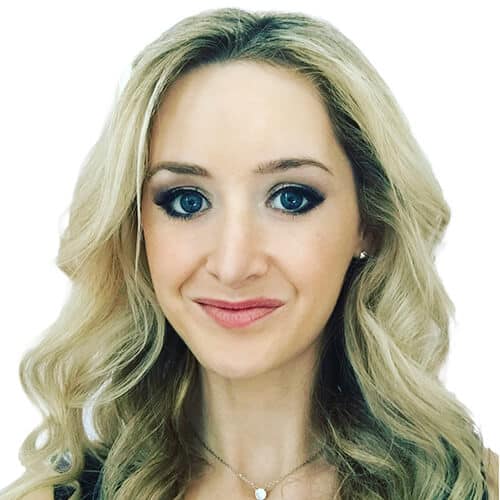
Understanding alter systems means recognising multiplicity not as disorder, but as the mind’s most creative response to impossibly traumatic circumstances
Within dissociative identity disorder, an alter system represents neurobiologically distinct identity states that coordinate survival and daily functioning through adaptive mechanisms developed during childhood trauma, typically before ages 6-9.
These identity states operate as an integrated network which functions like an internal culture with communication patterns, protective protocols and specialised capabilities that form when the developing mind needs to separate overwhelming experiences, which it simply can’t process at such a young age.
The alter system’s architecture is a prime example of the resilience of the mind, and how able it is to enter into a state of self-preservation to both conserve resources and protect itself when in situations of extreme distress.
Neurobiological research shows that people with DID possess exceptional dissociation and hypnotic state abilities according to studies which suggest genetic predisposition through learning and memory function genes.
The different identity states within the system perform distinct roles including memory management of traumatic events and executive task execution and creative resource utilisation and social skill navigation.
The adaptive organisation develops through “autohypnotic trance states” which researchers describe as spontaneous dissociative responses that enable the developing mind to create specialised identity states without external direction thus representing one of the most advanced psychological survival mechanisms found in trauma research.
What Is an Alter System in DID?
You could think of an alter system as something close to an internal team, where all the different members have specialised roles and different styles of communication.
For example, some systems might function like a well-coordinated workplace. Because of this, there may be frequent internal dialogue and free information sharing among all the members of this team.
However, other systems might operate more like departments that rarely interact, creating many barriers to communication and understanding. Essentially working in isolation, these systems often require significant therapeutic support to improve these communication pathways.
The Science Behind System Organisation
There’s been some fascinating recent research using machine learning that has identified specific neural pathways now helping to distinguish the functionality of DID from other mental health conditions.
It’s bee found that individuals with DID display decreased grey and white matter across significant areas of their prefrontal cortex. This is the area of the brain responsible for executive functioning. But, in contrast, other regions of the brain that play a significant role in dissociation have actually been shown to have increased volumes. These areas include the periaqueductal grey and precuneus regions.
Why Systems Develop This Way
These systems typically develop from the same fundamental need: maintaining functionality whilst protecting against re-traumatisation at all costs.
In practice, this means that different identity states step forward to take control when there is a need for specific skills, perspectives, or coping mechanisms. This might happen more frequently during triggering experiences, where emotional processing is required that the conscious expression of the individual simply cannot manage.
It can also occur when there are demands in daily life that certain alters are better equipped to handle in a far more constructive and productive way than the conscious, grounded individual is able to undertake.
How the Load Gets Distributed
The presence of these alter systems creates what’s often referred to as “psychological load distribution.” Essentially, this means that the collective of alters is able to share the mental and emotional workload when the conscious aware individual with DID might otherwise be overwhelmed.
Advanced neuroimaging studies have revealed that people with DID actually show hyperconnectivity between the parts of the brain involved in self-generated thoughts and executive functioning.
Although this isn’t yet fully understood or scientifically verified, it does suggest a dominance of internally focused, goal-directed thinking. This may reflect an adaptive childhood response to unreliable caregivers, which is often one of the primary factors leading to dissociative identity disorder. In essence, when external support systems fail, the mind creates internal ones.
Core Components of Alter System in DID
Within DID, alters and alter systems often have key markers that set them apart from other identity disturbances or dissociative experiences related to PTSD.
However, it’s important to emphasise that each individual is exactly that – unique. Everyone will present with their own distinct expression of alters, shaped by their particular trauma and other causative factors.
Distinct Identity States
Each alter represents a unique identity, with its own way of thinking, its own memories, and its own way of relating to the world. They each have their own unique style of forming relationships, and each meets the DSM-5-TR criteria in one important way: each alter represents a clear break in the sense of self and in the control that the consciously aware individual with DID might have.
These are markedly different from mood swings or any other type of emotional turbulence or emotional ups and downs.
Recent neural imaging research has offered some truly remarkable insights into the brain changes that occur in people with DID when they switch between alters.
Functional MRI scans have now shown that there are significant shifts in brain activity during these transitions. These changes have been observed in areas of the brain most associated with decision-making and executive functioning, which is the prefrontal cortex.
One of the most interesting observations, though, is that these changes can actually vary depending on the level of cooperation between different parts, or alters, and how well the system is working together overall. This suggests that the level of internal cooperation within the alter system has a significant influence on the brain’s functional capacity during switching events.
Key neurobiological findings include:
- Corticolimbic inhibition patterns: The brain’s cortex overly suppresses the amygdala (emotion centre) during dissociative states
- Default mode network changes: Increased activity in the dorsomedial prefrontal cortex when at rest, compared to healthy controls
- Machine learning detection: Brain structure analysis can identify DID with 72% sensitivity and 74% specificity
Integrated Memory and Communication Systems
The function of memory in DID is very different from the typical autobiographical memory that many of us are familiar with. Within DID, memory acts more like a protective filing system, which serves to keep traumatic memories compartmentalised in order to avoid overwhelming the individual while still allowing for daily functioning. One of the key factors in this process is the serotonergic system, which plays a crucial role in dissociation by affecting how serotonin binds to the receptors that control memory and emotions.
Communication Level Framework:
|
Communication Level |
System Characteristics |
Practical Implications |
Therapeutic Focus |
|
High Cooperation |
Frequent internal dialogue, shared awareness, co-consciousness periods |
Smoother daily functioning, collaborative decision-making |
Maintenance and optimisation of existing communication |
|
Moderate Cooperation |
Intermittent communication with some coordination |
Occasional internal conflict, improving with therapeutic support |
Developing consistent communication pathways |
|
Low Cooperation |
Significant barriers, switching without awareness |
Requires therapeutic intervention to develop communication pathways |
Establishing basic internal communication protocols |
Neurological Switching Mechanisms
- Different identity states can take executive control over behaviour, decision-making, and emotional regulation during a switch.
- Advanced neuroimaging studies reveal distinct neural activation patterns during switching, which vary when the incoming state is trauma-linked versus neutral.
- Altered conscious awareness lets identity states emerge with their own regulatory styles.
- Executive functioning shifts as individual alters draw on unique cognitive frameworks.
- Neurological transitions involve changes in prefrontal cortex activity and overall network connectivity.
- Switching serves as an adaptive response to internal system needs or external environmental triggers.
- Cardiovascular markers often fluctuate, with measurable changes in heart rate and blood pressure during identity state transitions.
Common Misconceptions About Alter System in DID
The Control Myth
- Myth: People with DID can “call up” an alter at will, like actors switching roles.
- Reality: Switching is typically involuntary per DSM-5-TR criteria. Identity states surface in response to internal needs or external triggers—not conscious choice.
The Violence Misconception
- Myth: Dangerous, unpredictable alters make people with DID a threat.
- Reality: Studies show individuals with DID are more often victims than perpetrators. Most systems share a common moral code, and switches are usually subtle rather than dramatic.
The “Universal Configuration” Fallacy
- Myth: Every system contains the same set of alter “types” arranged in similar ways.
- Reality: No two systems are identical. Differences arise from each person’s trauma timeline, environment, and development:
- Number of alters: Anywhere from 2–3 to 100+
- Demographics: Some systems span ages/genders; others feel more uniform
- Functional roles: Common patterns exist, but none are mandatory
Integration Misunderstandings
- Myth: Integration means “deleting” alters.
- Reality: Per ISSTD guidelines, integration focuses on collaboration. Paths include full fusion, functional cooperation, or harmonious coexistence—whichever best supports the person’s wellbeing.
Remember: Alter systems are adaptive responses, not conscious inventions.
Advanced Recognition Strategies for Alter System DID
System Mapping Techniques help identify alter patterns through systematic observation and documentation:
- Trigger Response Analysis: Noting which situations activate different identity states, including environmental, emotional, and relational triggers
- Skill Set Variations: Recognising when different capabilities emerge unexpectedly, such as sudden artistic abilities, language changes, or altered motor skills
- Internal Communication Assessment: Observing periods of internal dialogue, co-consciousness, or apparent “conversations” with unseen others
- Memory Pattern Recognition: Identifying compartmentalised memory systems and access patterns, including gaps in autobiographical memory
Advanced Communication Development Strategies:
Internal Communication Protocols:
- Journaling systems that allow different alters to communicate through written dialogue
- Internal meeting structures establishing regular internal communication sessions
- Negotiation frameworks for managing conflicting alter needs and preferences
- Boundary establishment creating internal agreements about when different alters can assume control
Therapeutic Application Framework:
If every alter has their own ways of relating, memories, and personalities, this means there needs to be a tailored and person-centred – or perhaps alter-centred – approach in any therapeutic relationship undertaken with someone who has DID. Each alter has their own separate needs, so they all need to be spoken to in a way that is most supportive for them.
Protector alters are going to require vastly different support strategies compared to trauma holders. Child alters almost always need a much gentler approach than adult gatekeepers. Persecutor alters, on the other hand, require incredibly specialised care to help navigate their overly protective intentions, while also reducing harmful behaviours.
This quality of understanding helps enormously in creating a bridge between post-traumatic stress responses and organised identity states within DID. Practically speaking, it offers a way to improve internal communication and, in doing so, greatly enhances the quality of life for the individual.
In terms of supportive therapeutic modalities, cognitive behavioural therapy can be adapted for DID, with a specific focus on supporting particular alters. This approach aims to help the individual achieve a better balance in life by managing their emotions more effectively, using techniques tailored specifically for different identity states.
Recognition validates lived experience while revealing the internal structure and protective mechanisms that serve as therapeutic anchors for healing and survival.
Comprehensive Alter Types and Functions
Host Alters: The Executive Functioning Coordinators
The public face of the system is represented by host alters which handle work duties together with financial management and daily interpersonal connections. The host maintains their status as the “main” person in the system even though others acknowledge this position without elevating their importance above other alters.
The biggest responsibilities for maintaining normal life fall to these alters which can often lead to chronic exhaustion. They may also be either aware or unaware of the full alter system. In some instances, host alters know about the system and recognise that they are part of it, understanding that they share a body and life with other identity states.
Recognition indicators: Consistent presence during routine activities, responsibility for maintaining external relationships, may experience unexplained fatigue from system coordination demands.
Protector Alters: System Security Network
The protective alters operate in a role that could be likened to a security team who take charge in dangerous circumstances to protect all parts of the system from harm. These alters emerge because the mind deemed it necessary for survival. They’re not simply combative for the sake of it. They believe they’re doing what’s right.
What makes protectors stand out:
- They can often be more mature or stronger and more dominant than other system members.
- The protection of safety remains their absolute priority even if safety is already felt
- They might struggle in peaceful settings because they have no outlet to express themselves
- Their continuous hypervigilance can lead to relationship challenges.
Recognition indicators: Hypervigilance in safe environments, quick defensive responses, difficulty relaxing, strong sense of responsibility for system safety.
Child Alters: Preserved Developmental States
Child alters exist as emotional time capsules which preserve the individual’s state from a particular developmental stage exactly as it appeared during traumatic events. These alters maintain their pre-trauma characteristics of child-like wonder, innocence and playfulness.
They typically appear during creative activities in safe spaces, which allow for the individual to play and reconnect with the innocence of their heart. Nostalgia can often be a big part of them surfacing, which could be anything from a song to a smell or a picture.
Child alters are not immature; rather, they are developmentally appropriate for their age. An alter who exists as a five-year-old will display all typical behaviours of a five-year-old while needing patient interactions and suitable communication methods.
Recognition indicators: The indicators for recognising child alters include their developmental responses that match their actual age and their natural curiosity about things from their age group.
Caregiver Alters: Internal Nurturing System
Caregiver alters represent the nurturing presence within the system, providing the warmth and care that was never received during childhood. They often develop as a result of absent or neglectful caregivers, and serve to supply the emotional support that was lacking during the individual’s developmental years.
These alters function to create inner peace and system harmony by offering comfort to child alters as well as assisting the system with memory processing. Their presence can be deeply healing, as they provide the love and acceptance, which can help in times of emotional dysregulation.
Recognition indicators: Nurturing responses to system distress, maternal/paternal protective instincts, ability to provide emotional regulation for other alters.
Trauma Holder Alters: Specialised Memory Containers
Trauma holder alters carry perhaps the heaviest burden within the system, as it’s their responsibility to hold all of the overwhelming experiences so the other parts of the system can function in their day-to-day tasks. Their specific role is to contain all of the memories, emotions, and somatic experiences that were too traumatic for the developing mind to process.
Trauma holder alters tend to stay largely out of sight unless a specific trigger activates a memory they hold. When the trauma is activated and a full trauma response occurs, the alter will experience the event as if it is actually happening in the present moment. This can lead to flashbacks, heightened emotions – emotional dysregulation – and intense physical reactions within the body and nervous system.
Recognition indicators: Sudden overwhelming emotions without apparent cause, flashback experiences, physical symptoms triggered by specific reminders, protective withdrawal behaviours when activated.















